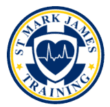Participants enrolled in Bronze Medallion will need to complete a number of components to successfully complete the course. One of the major components of the Bronze Medallion is the rescue drills. In the rescue drill described on this page, rescuers will start in the water and demonstrate a 20-meter head-up approach followed by a surface dive to recover a victim or manikin. Rescuers must then return to the starting point using a control carry to support and carry the victim or manikin. The purpose of this activity is to demonstrate a sequence of related lifesaving skills. The material posted on this page is for information purposes only. To learn rescue skills and other lifesaving skills take a Bronze Medallion course through the Lifesaving Society.
To successfully complete the Bronze Medallion course participants must successfully demonstrate the following skills and knowledge when attempting the rescue drill:
- Participants must use a head-up stroke for the approach.
- Participants must have a quick and efficient descent to the victim.
- Participants must ascend with the victim’s head tilted forward or mouth and nose covered with the rescuer’s hand.
- Rescuers must demonstrate an effective control carry.
- Rescuers must maintain the victim’s mouth and nose supported above the water during the carry.
- Rescuers must complete the required distance.
Additional Notes:
- Rescuers must complete the components in a continuous sequence.
- The maximum depth of the victim is 3 meters.
- Rescue breathing is not a required component of this drill.
To successfully complete this rescue drill candidates must complete all of the skill and knowledge components posted above. This rescue drill is one of the most intensive and comprehensive components of the course. Candidates are required to utilize skills learned in previous sections. Strong treading water or eggbeater skills are a requirement to attempt this drill.
